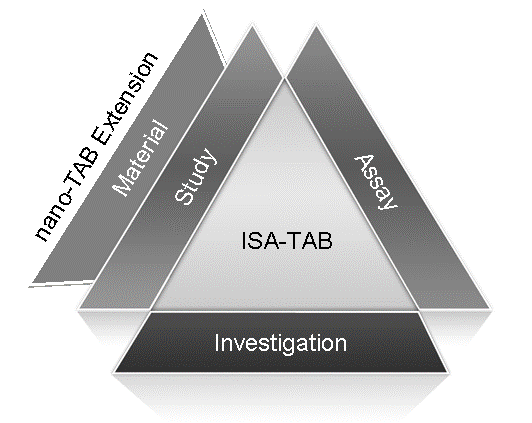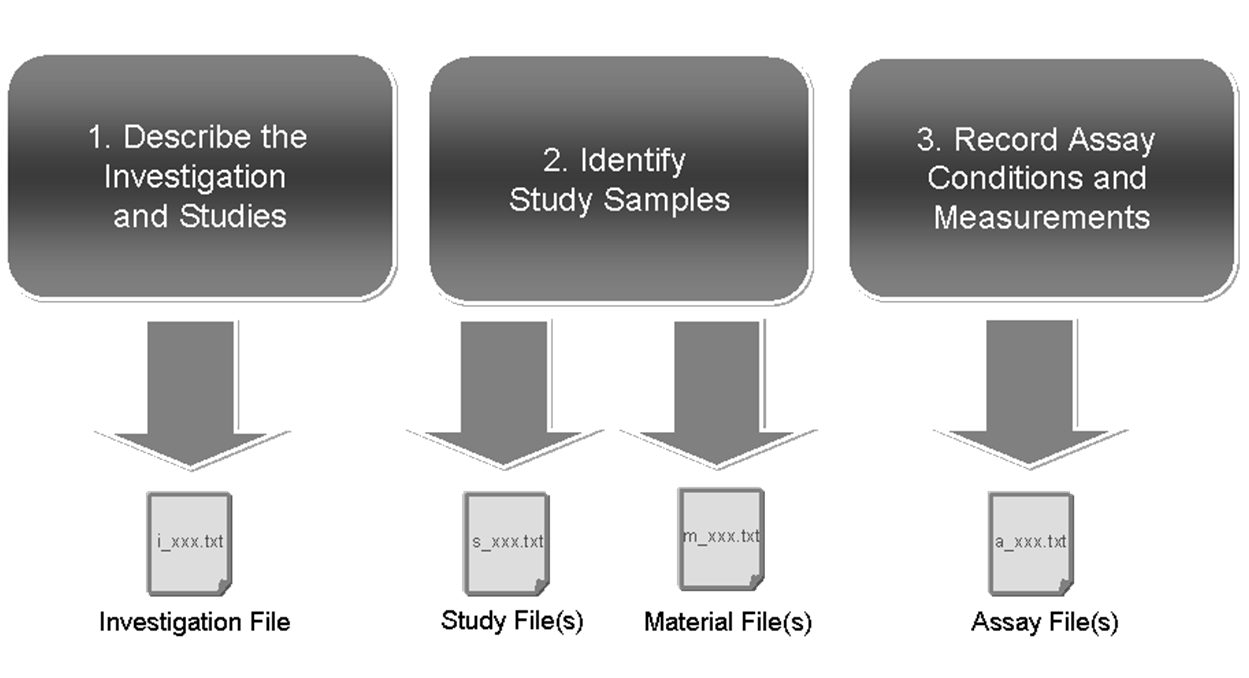 |
Page History
...
When sharing primary nano-TAB files, other files referenced in these files have to be shared along with the primary files. It is anticipated that content management systems will become available to facilitate the sharing and exchange of files. Until then, these files could be bundled together in a folder and shared as a zip file.
FIG 1. Nano-TAB File Structure
3.2 Nano-TAB File Development Process
In FIG 2, the nano-TAB file development process is described. Typically, the investigation file is developed first and describes the overall investigation, associated studies and assays. The investigation file is a text file with a naming convention of “i_xxx.txt” or “i_xxx.xls,” in which xxx can be any name provided by the investigator. Once the investigation file has been completed, one or more study files (following the convention “s_xxx.txt” or “s_xxx.xls”) can be created. Similarly, one or more material files can be created. The material file describes the nanomaterial (or small molecule) and its components including structural information and follows the naming convention “m_xxx.txt” or “m_xxx.xls”. Assay files (following the convention “a_xxx.txt” or “a_xxx.xls”) are created for all assays performed. Each assay is defined by the endpoint measured and the technique used to measure that endpoint. Data files (raw or derived) specific to each type of assay can be associated to the respective assay files by referencing the names of the data files in the assay files.
FIG 2. Nano-TAB File Development Process
| Wiki Markup |
|---|
Once the nano-TAB files have been created, the files can be validated and submitted into nanotechnology resources that support the nano-TAB specification. It is anticipated that validation of the files may occur via a validation service that leverages a modified version of the ISA-TAB validator \[10\]. It is also anticipated that nanotechnology resources like caNanoLab, the Nanomaterial-Biological Interactions (NBI) knowledgebase ([http://nbi.oregonstate.edu/]), and other resources will provide facilities for importing/exporting nano-TAB files as the nano-TAB specification evolves. |

